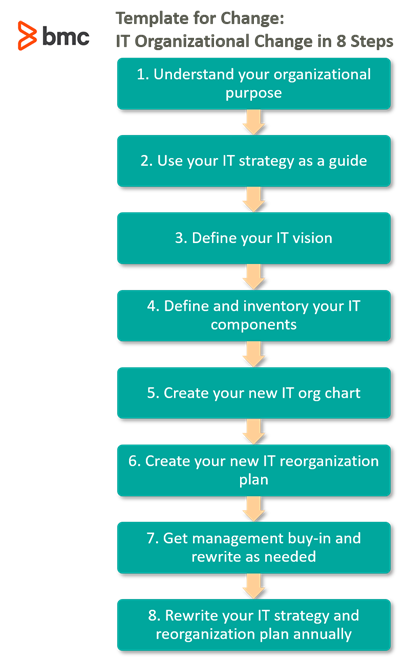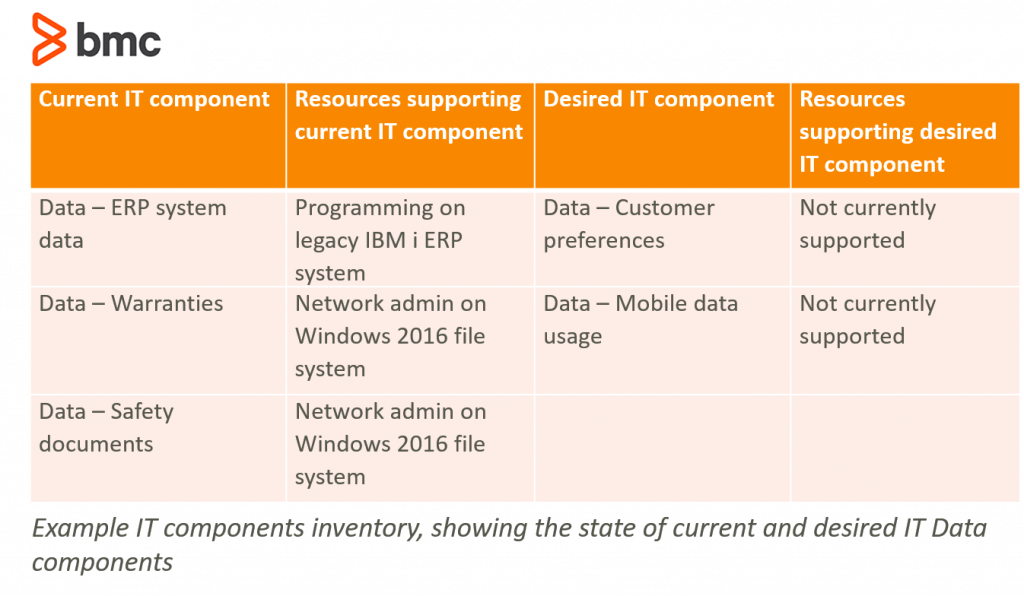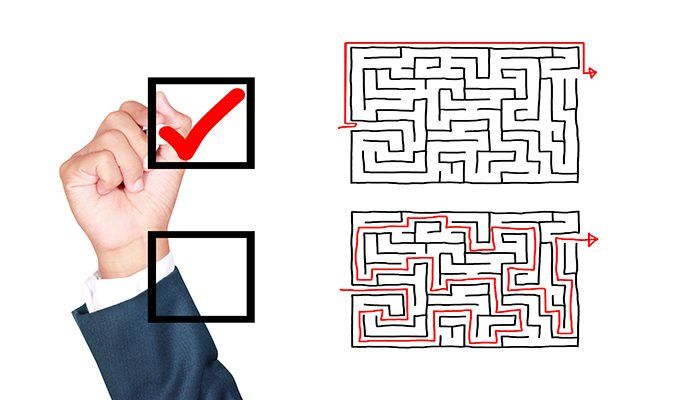IT is all about organizational change and technical disruption. Organizations use IT as a digital tool for two reasons: to create technological disruption in their marketplaces and to increase organizational value.
But how do you change the IT function in order to change your overall organization? How does IT reorganize itself to enable organizational change?
To answer those questions, I’m sharing a template I created for enabling IT organizational changes, based on my past experience and grounded around an organization’s IT vision and strategy. IT change management can be overwhelming, particularly at the organizational level. Use this template as a starting point and a framework for your own IT reorganization.
Eight steps to IT Reorganization
Like any good self-help program, an IT reorganization plan requires many steps to complete. Figure 1 shows a proposed eight-step plan for reorganizing an IT organization.

This goal of this template is to help you align your new IT organization with your organizational goals. It’s dependent on understanding your goals and creating an IT strategy and vision to achieve them. An IT organization cannot fulfill its organizational goals without a clear understanding of the goals and how IT supports those goals.
Let’s examine each step and how you can use this template to plan your own IT reorganization.
Step 1: Understand your reorganizational purpose
Change occurs because something important has happened or needs to happen. Common reasons for reorganizing an IT function include:
- Digital reorganization. Your company must take a significant step forward in its digital evolution, but your IT is stuck in an early-2000s structure. Your current organization isn’t up to the challenge and must change.
- Something is broken. IT can’t meet its SLAs or corporate goals. Major initiatives have stalled or stopped. Morale is bad. Projects can’t be completed. You’re having trouble hiring and retaining staff.
- The organization has been acquired, merged, or is in acquisition mode. You’re growing or shrinking due to mergers and acquisitions. You need to deal with staff changes, disparate systems, different skill sets, and different budgets.
- You need to standardize. Your digital business is a mash-up of different divisional IT practices, creating waste, confusion, and 20 different ways to do things. Your brand and back office practices are confused, and you must bring them together under a single standard.
Before creating your reorg plan, make sure you fully understand what’s driving that reorganization, as those drivers will affect your reorganization process.
Step 2: Use your IT strategy as a guide
An IT strategy defines your organization’s IT vision and its plan for expanding IT capabilities. It’s a roadmap for creating organizational value through IT, and it directly informs how to structure IT.
Creating an IT reorganization plan is infinitely easier when you have a detailed IT strategy because your strategy does a lot of the organizational planning work for you. It also contains specific sections for what IT needs to do, including critical initiatives, resources, technologies needed, and most importantly, how to manage IT.
Creating an IT strategy doesn’t have to be difficult—I’ve put together a guide for creating an IT strategy. Even if your organization doesn’t have one, create it, even if only for your own use.
Step 3: Define your IT vision
An IT strategy also defines your IT vision. Your IT vision answers the broad question of how IT needs to change to meet organizational goals.
An IT vision commits to what management expects IT to do for the organization. Your IT vision should be high level, strategic, tied to organizational goals, and relate to the company’s plans for creating value through IT. IT vision statements should be written using organizational language, not IT-speak.
Knowing your IT vision is critical in determining what talent, equipment, telecommunications capabilities, etc., that your IT function will need.
Step 4: Define and inventory your IT components
At this point, you know your reorganizational purpose (Step 1) as well as the strategy (Step 2) and vision (Step 3) you’re serving by reorganizing. You’ve got the basic framework of what IT needs to do.
Now, break that framework down into its individual IT components and how they relate to your purpose, strategy, and vision. Create an IT components inventory, where you compare what you want IT to do against what IT is already doing.
Common IT organizational components include:
- Data. The capture and organization of information needed to meet your IT vision, in all its formats (databases, documents, spreadsheets, etc.).
- Platforms and apps. The processes, equipment, and apps needed for product creation, delivery, accounting, servicing, maintenance, and all customer deliverables
- Interfaces. The front-end views that your internal and external customers, employees, business partners, and stakeholders see when they are working with your products and data. How the user accesses data and apps over mobile devices, PCs, laptops, terminals, IOT devices, etc.
- Devices. The physical equipment your stakeholders use to interface with your products and processes, including cell phones, PCs, laptops, scanners, terminals, IOT devices, printers, and other equipment
- Networks. The virtual and physical components that all the other components communicate over, including on-prem and cloud networks, as well as the physical infrastructure (wiring, routers, access points, power, UPS systems, etc.)
- Security. The systems that protect your digital infrastructure from external and internal bad actors, including firewalls and other security-related hardware and software
- Governance. Systems for gathering, reporting, and distributing required information to outside entities (auditors, governments, industry regulations, financial reporting, etc.).
- Business intelligence. Analyzing historical information to create new insights about user behavior that can yield positive benefits, such as better understanding customer needs, increasing sales, improving products, improving customer service, identifying waste and fraud, and reducing costs.
Create this inventory as a high-level view of what IT provides, similar to what you’d see on an org chart. You’re looking for functional areas that define your IT organization.
Once you’ve identified the component areas in your IT components inventory, you can further break down those areas into four columns: Current IT component, Resources supporting current IT Component, Desired IT Component, and Resources supporting desired IT component as shown in our sample partial IT component inventory, below. Desired IT components can be extracted from your IT vision and strategy (those things IT has committed to delivering).

As you inventory your IT components, take out your current organizational chart and identify what resources (human, machine, and digital) are currently supporting each of the functions you’ve identified and list them in your inventory. You will probably find your current structure is already supporting some of the desired IT components listed in your inventory.
For example, in the table above, the Current IT Component column Data items may contain ERP system data, warranties, and safety documents. The Desired IT Component column may specify information you don’t currently have but need, such as customer preferences, mobile data usage, and more. In addition, data may currently be owned and managed by your legacy application programmers (ERP systems), network administrators (file shares), or other entities. Other data may not be provided by anyone.
The goal is to inventory what your IT vision and strategy want and need against what’s already available.
Step 5: Create your new IT org chart
The previous steps have been an alignment and an inventory. You’ve aligned your IT reorganization with the reorganization’s purpose, business needs, vision, and strategy. You’ve inventoried the IT components your reorganization requires against your current organizational chart, current IT components, and desired IT components.
You know what your organization wants, what it currently looks like, and how it relates to your IT vision. Now it’s time to turn that work into a reorganization plan.
Start by creating a new IT organizational chart, accounting for the needs you’ve uncovered in the last four steps. For example, if your company has just gone public, you now fall under new regulations such as Sarbanes-Oxley. You may need a new IT component called IT Governance. Put that area in your org chart and start identifying what human, device, and process resources would need to go under that.
Similarly, if your plan calls for migrating several different production systems into a unified production system like SAP, you may want to reorganize into separate production application groups: one for SAP clients and one for supporting and migrating legacy clients. If you aren’t mobile yet, you may have a separate group that deals with mobile apps. Your current needs and future needs will define your new org chart.
All the information gathered up to this point will shape the new org chart in conjunction with what you have and what the organization wants.
Step 6: Create your IT reorganization plan
Armed with your new org chart, put together a budget and a timeline for how this reorganization will occur. These items may already be present in your IT strategy and can be built upon. Recognize that a major reorganization may not be completed in a single year, but these three items—the new Org chart, the timeline, and the budget—will provide the roadmap for how IT will be reorganized.
All of these inputs—your IT purpose, strategy, vision, IT inventory, your new IT org chart—can now be compiled into an IT reorganization plan. Your IT reorganization plan would then show.
- The need for reorganization
- The business requirements and IT vision you’re reorganizing around
- Other significant considerations, projects, and initiatives, as defined in your IT strategy
- New IT organization chart
- Budget: what this reorganization will cost
- Reorganization timeline
Step 7: Get management buy-in and rewrite as needed
Although this is listed as a separate step, management should be kept aware of and contribute to your IT re-organization throughout the entire process. Don’t expect that you’ll get approval on the first try. You may need to tweak and change according to management input and changing business conditions.
Step 8: Re-evaluate your IT strategy and your reorganization plan once a year
Once approved, work your plan as written, understanding that you may need to change, modify, or even start over due to changing conditions. For example, your organization could be sold in which case your new owners will have their own ideas of where to go with their IT vision.
As I wrote in my piece on creating an IT strategy, write your reorganization plan for five years, but rewrite it every year. This allows you to create a long-term plan with a process for making course corrections.
Using this template as a starting point, you can reorganize IT to serve organizational needs, while retaining the flexibility to continuously change IT to meet future demands.
These postings are my own and do not necessarily represent BMC's position, strategies, or opinion.
See an error or have a suggestion? Please let us know by emailing blogs@bmc.com.






